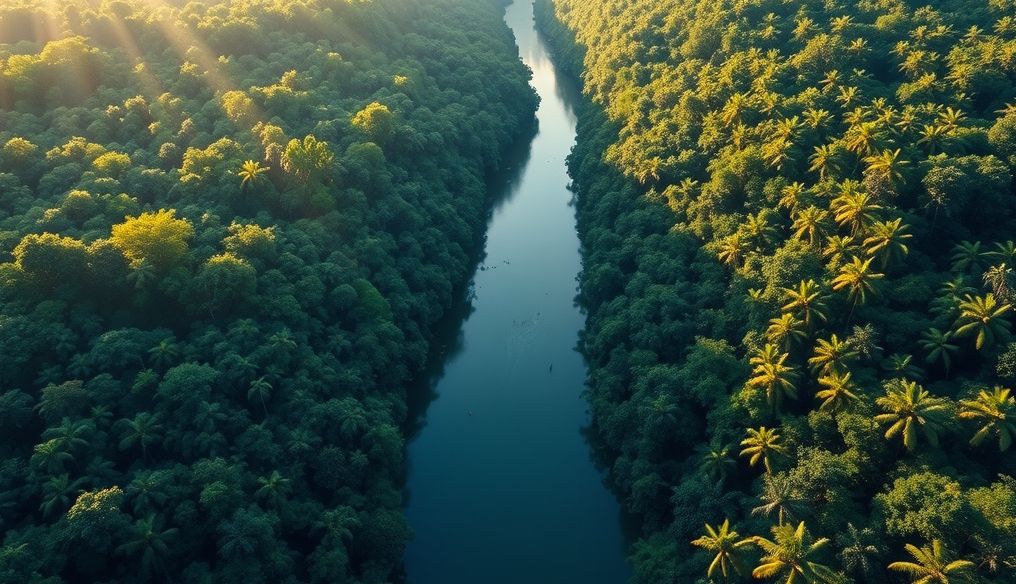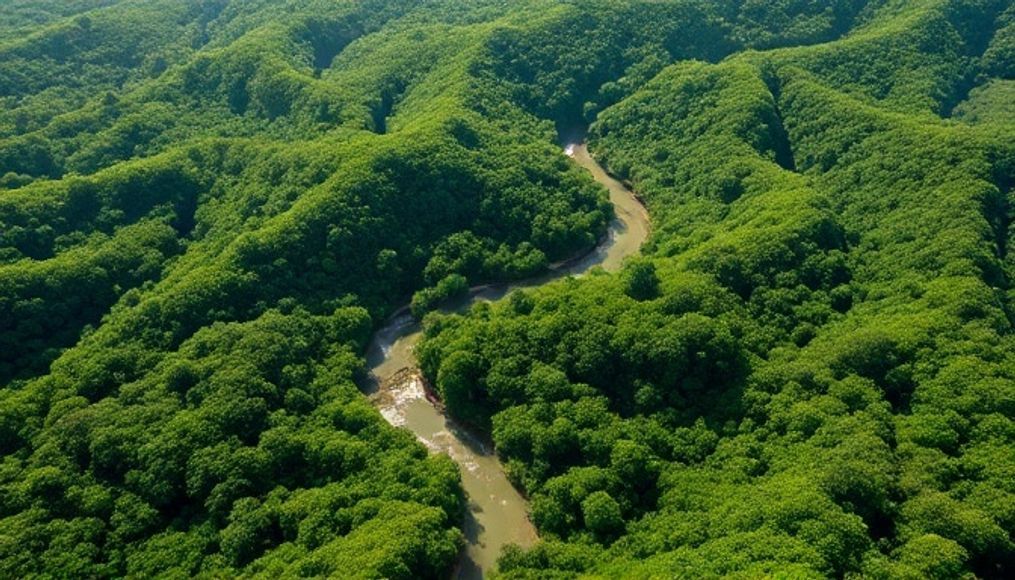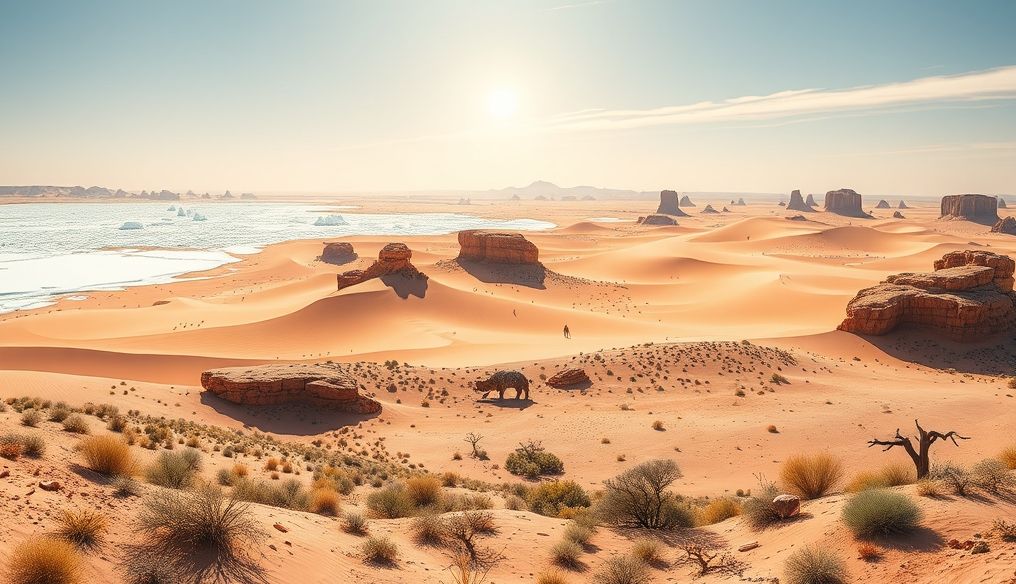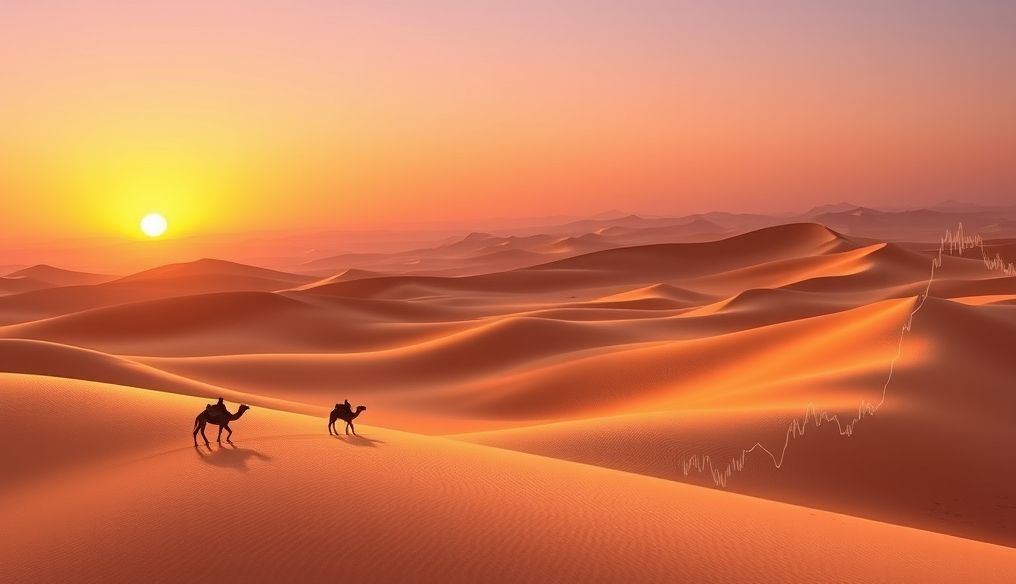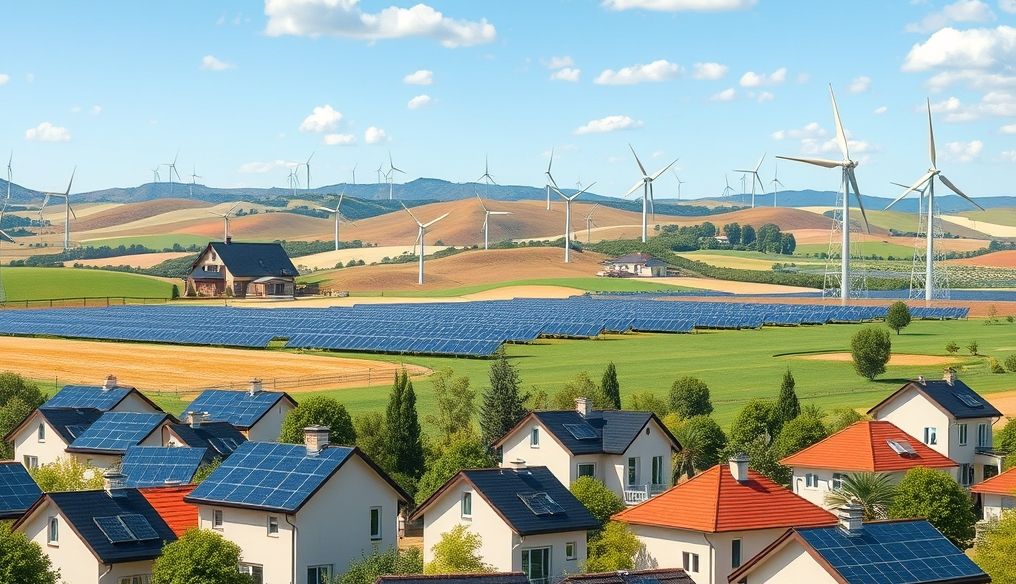Is the Amazon Rainforest Really the "Lungs of the Earth"? A Comprehensive Scientific Look
We've often heard about the Amazon rainforest, that vast green expanse in South America, being described as the "lungs of the Earth." This common description directly links the Amazon to the production of the oxygen we breathe. But is this portrayal scientifically accurate? And is the Amazon's true role limited only to oxygen production? This article will delve into the Amazon's multifaceted functions, exploring the validity of this popular title, taking into account the latest scientific research.
Chapter 1: The Origin of the "Lungs of the Earth" Title
The origin of the "lungs of the Earth" title dates back to a period when environmental awareness began to increase in importance. In the 1970s and 1980s, with growing concern about the destruction of rainforests and its impact on the climate, this description emerged as a simple and direct way to illustrate the importance of the Amazon. The basic idea was that forests, through the process of photosynthesis, absorb carbon dioxide and release oxygen, thus "breathing" for the planet.
However, as science evolved, a more complex picture began to emerge. While the Amazon's role in oxygen production cannot be denied, other factors play a crucial role in determining the net amount of oxygen that forests contribute to the atmosphere.
Chapter 2: Photosynthesis and Cellular Respiration in the Amazon
To understand the true role of the Amazon, one must first understand the process of photosynthesis. Plants, including Amazonian trees, absorb carbon dioxide from the air and water from the soil, converting them into glucose (sugar) and oxygen using light energy from the sun. This oxygen is released into the atmosphere.
But the process doesn't stop there. Plants also respire, just like any other living organism. In the process of cellular respiration, plants use a portion of the oxygen they produced to burn glucose and produce the energy needed for their growth and survival. This process releases carbon dioxide back into the atmosphere.
In addition, dead organic matter in the forest, such as fallen leaves and dead trees, is decomposed by microorganisms. This process also consumes oxygen and releases carbon dioxide.
Chapter 3: The Amazon's Oxygen Balance: Production and Consumption
The essential question is: does the Amazon produce more oxygen than it consumes? The answer is not simple. In the past, the Amazon was considered a net source of oxygen, with its production exceeding its consumption. But as the forest ages, it begins to reach a state of equilibrium. Large trees do not grow as fast as young trees, and therefore the rate of photosynthesis decreases.
More importantly, the destruction of rainforests significantly affects the oxygen balance. When forests burn, vast amounts of carbon dioxide are released into the atmosphere, reducing the forest's ability to absorb carbon and produce oxygen.
Some studies suggest that the Amazon rainforest may now be closer to being oxygen-neutral, meaning that it produces approximately the same amount that it consumes. This does not mean that it is unimportant, but rather that its role is more complex than simply being a "lung" that produces oxygen.
Chapter 4: The Amazon's Role in Global Climate Regulation
The importance of the Amazon goes beyond oxygen production. Rainforests play a crucial role in regulating the global climate in several ways:
- Carbon Storage: Trees absorb vast amounts of carbon dioxide from the air and store it in their trunks, branches, roots, and leaves. This helps reduce the concentration of greenhouse gases in the atmosphere, thus mitigating the effects of climate change.
- Water Cycle Regulation: Rainforests release large amounts of water into the atmosphere through the process of transpiration, where water evaporates from the leaves of trees. This water forms clouds and rain, helping to regulate rainfall patterns in the region and beyond.
- Influence on Air Currents: Rainforests affect global air currents, influencing weather patterns around the world.
Destroying the Amazon disrupts these vital processes, exacerbating climate change and increasing the risk of drought and floods.
Chapter 5: Biodiversity in the Amazon
The Amazon rainforest is home to over 10% of the known species on Earth. This immense biodiversity makes the Amazon a priceless global treasure. The rainforests contain millions of species of plants, animals, insects, and microorganisms, many of which have not yet been discovered.
The destruction of rainforests leads to habitat loss and ecosystem degradation, putting many species at risk of extinction. This not only affects biodiversity but also affects the environmental services provided by forests, such as water purification and crop pollination.
Chapter 6: Threats Facing the Amazon
The Amazon rainforest faces many threats, including:
- Deforestation: Rainforests are being destroyed at an alarming rate to convert land into cattle ranches, agricultural fields, and mines.
- Forest Fires: Fires are often deliberately set to clear forests, but they can spread quickly and destroy vast areas of forest.
- Climate Change: Rising temperatures and changing rainfall patterns increase the risk of drought and fires, threatening the health of forests.
- Illegal Mining: Illegal mining leads to water pollution and forest destruction.
Addressing these threats requires global efforts from governments, non-governmental organizations, and individuals.
Chapter 7: Conservation Efforts and Sustainable Initiatives
There are many efforts underway to protect the Amazon rainforest, including:
- Establishing Nature Reserves: Nature reserves help protect rainforests from deforestation and mining.
- Promoting Sustainable Agriculture: Sustainable agriculture helps reduce the need to clear forests for crop cultivation.
- Combating Illegal Logging: Combating illegal logging helps protect forests from destruction.
- Supporting Local Communities: Local communities play a crucial role in protecting rainforests, and they must be supported and empowered.
In addition, there are many sustainable initiatives aimed at promoting economic development while preserving the environment, such as ecotourism and the production of sustainable forest products.
Chapter 8: The Amazon and the Future: What Can We Do?
The future of the Amazon rainforest depends on the actions we take today. We can all contribute to protecting the Amazon by:
- Supporting Organizations Working to Protect the Amazon: There are many non-governmental organizations working to protect rainforests, and we can support them through donations or volunteering.
- Buying Sustainable Products: We can buy products that have been produced in sustainable ways and do not contribute to the destruction of rainforests.
- Reducing Meat Consumption: Cattle ranching is a major cause of deforestation in the Amazon, and we can reduce meat consumption to help reduce the demand for agricultural land.
- Raising Awareness: We can raise awareness about the importance of the Amazon and the threats it faces.
In conclusion, while describing the Amazon as the "lungs of the Earth" may be an oversimplification, it does not diminish the importance of these rainforests. The Amazon plays a crucial role in regulating the global climate, preserving biodiversity, and providing essential environmental services. Protecting the Amazon is a global responsibility that requires joint efforts from everyone.
The Amazon rainforest is one of the most biodiverse ecosystems on Earth, and plays a critical role in regulating the global climate.
— World Wildlife Fund
